How to select inks for food packaging?
In this article, Siegwerk’s Jatin Takkar evaluates different food packaging applications with regards to the potential migration risk of the packaging structure, and guides on the selection of ink for the application and packaging material combination
30 Jun 2017 | By WhatPackaging? Team
Let us first look at categories with migration risk
The following table gives a non-exhaustive overview on the major packaging categories with risk of migration, set-off and/or organoleptic deterioration, as well as recommendations with regard to the selection of ink types and validation measures by the printer.
In case of packaging with an identified migration risk, only inks and varnishes explicitly intended for food packaging should be used.
Special attention must be paid to applications subject to high temperature exposure, such as pasteurisation, sterilisation (dry or in an autoclave), microwave or baking oven. To prevent migration of cleavage products from certain yellow, orange or red pigments, selection of special ink shades, based on appropriate high-performance pigments, may be required. This applies especially if the packed food will be subject to more than 200 °C in a microwave or baking oven; equally a particular choice of alternatives is necessary if food is to be boiled, pasteurized, sterilized, or cooked in a microwave or baking oven, and is packed in structures which do not provide a functional barrier to migration.
A printer should additionally use the checklist: “Processes and Parameters which potentially trigger non-compliance [sic] (migration, organoleptic effect)” for verifications (see article Compliance: Ink migration in food packaging). Packaging intended for particularly sensitive consumer groups (such as infants and small children) requires formal qualification in any case.
|
Flexible Packaging
|
||||||
| Application |
Sandwich print in laminates or surface print on
monofilm
WITHOUT the inner layer(s) being a barrier
to migration
|
Thermally treated
packed food.
Sandwich print in
laminates or surface
print on monofilm
WITHOUT the inner
layer(s) being a
barrier to migration
|
Surface print monofilm and liddings
WITH the inner layer(s) being a
barrier to migration
|
Sandwich print
in laminates
WITH the inner
layer(s) being a
barrier to migration
|
||
| Examples |
Cheese, meat products, tea bags, confectionery,
bakery products, butter wrappers
|
Ready meals, bakery,
pasteurized, sterilized
dry or in an autoclave,
boil-in-the-bag, microwaveable
|
Dairy products (aluminum lids) |
Meat products, ready
meals, soups, spices,
coffee, tea, preserved
food, packed in laminates
with aluminum
foil
|
||
|
Potential migration
risk of the
packaging structure
|
Yes,
migration both via diffusion across the layers and
via set-off.
|
Yes,
migration both via
diffusion across the
layers and via set-off.
Migration can be
enhanced by temperature,
pressure and
water/steam distillation.
|
Yes,
migration via set-off to high absorbance layer (heatseal
varnish, PE …).
|
Yes,
migration via outer
layer(s) and set-off.
|
||
|
About inks for
this application
|
Solvent-based and
water-based
Only products intended
for food packaging.
|
UV curing
Only products intended
for food packaging
(‘low migration’) No
UV curing products for
small packaging for food
for infants and small
children.
|
Solvent-based and
water-based
Only products intended
for food packaging.
|
Solvent-based and
water-based
Only products intended
for food packaging.
|
UV curing
Only products intended
for food packaging (‘low
migration’) No UV curing
products for small packaging
for food for infants
and small children.
|
Solvent-based and
water-based
Only products intended
for food packaging.
|
|
Measures
recommended to
the printer
|
Calculate migration of
actual combination
of products on specific
packaging using
Siegwerk Statements of
Composition. Consider
qualification via migration
testing order upon
previous Siegwerk disclosure
to intended lab.
|
Formal qualification
via migration testing
order upon previous
Siegwerk disclosure
to intended lab.
|
Calculate migration of
actual combination of
products on specific
packaging using Siegwerk
Statements of
Composition. Consider
qualification via migration
testing order upon
previous Siegwerk disclosure
to intended lab.
Observe chapter 6.2.1
|
Calculate migration of
actual combination
of products on specific
packaging using
Siegwerk Statements of
Composition. Consider
qualification via migration
testing order upon
previous Siegwerk disclosure
to intended lab.
|
Formal qualification
via migration testing
order upon previous
Siegwerk disclosure to
intended lab.
|
Calculate migration of
actual combination
of products on specific
packaging using
Siegwerk Statements
of Composition.
|
| Rigid Liquid Food Packaging |
Self-Adhesive Labels, Cups, Tags , Sleeves, Tubes |
||||
| Application |
PE-coated board packaging
WITH or WITHOUT the inner layer(s) being
a barrier to migration
|
Application |
In-mold labels (IML) for cups, tubs, trays
WITH or WITHOUT the inner layer(s)
being a barrier to migration
|
Sleeves or glued or pressure-sensitive
adhesive (PSA) labels, laminated or not
laminated, for cups, tubs, trays
|
|
| Examples | Milk and fruit juice cartons, sauces, soups | Examples | Dairy products, sauces | Dairy products, sauces | |
|
Potential migration
risk of the
packaging structure
|
Yes,
migration via diffusion and/or set-off to high
absorbance PE layer
|
Potential migration
risk of the
packaging structure
|
Yes,
migration via diffusion and set-off. Label will
be melted on the container and become
a primary food packaging which is stacked
before filling
|
Yes,
migration via diffusion and set-off.
Sleeve or label will be applied onto the
container and become a primary food
packaging which is stacked before filling
|
|
|
About inks for this
application
|
Water-based, solvent-based, UV curing, electron
beam curing
Only products intended for food packaging
(UV: ‘low migration’). By default, no UV curing
products for small packaging for food for infants
and small children.
|
About inks for this
application
|
UV curing, oleoresinous offset,
water-based overcoatings
Only products intended for food
packaging (‘low migration’).
|
UV curing
Only products intended for food packaging
(‘low migration’).
|
|
|
Measures
recommended to
the printer
|
Calculate migration of actual combination of
products on specific packaging using Siegwerk
Statements of Composition. Formal qualification
via migration testing order upon previous Siegwerk
disclosure to intended lab.
|
Measures
recommended to
the printer
|
Formal qualification via migration testing
order upon previous Siegwerk disclosure to
intended lab.
|
Formal qualification via migration testing
order upon previous Siegwerk disclosure to
intended lab.
|
|
| Self-Adhesive Labels, Cups, Tags , Sleeves, Tubes | |||||
| Application |
Glued or PSA labels for primary packaging and
lidding
|
Shrink sleeves on PET bottles |
Shrink sleeves on PE/PP/OP
bottles
|
Tubes, cups | |
| Examples |
Labels applied on filling line to preformed and
filled packaging of all types of food.
|
Soda, mineral water. | Dairy food, fruit drinks. |
Mayonnaise,
mustard,
dairy products.
|
|
|
Potential migration
risk of the
packaging structure
|
Yes,
depending on barrier properties to migration
of the primary packaging: migration via diffusion
(set-off not possible).
|
Minor,
studies show that PET is quite a barrier to
migration from printed layers.
|
Yes,
migration via diffusion across
PE/PP/OPS is possible.
|
Yes,
depending on
point in time of
tube formation
and on presence of
barrier: migration
via diffusion
and/or set-off.
|
|
|
About inks for this
application
|
UV curing
Products intended for food
packaging (‘low migration’)
highly recommended. In
any case, odor optimized
products (‘low odor’) recommended.
|
Water-based,
solvent-based
Products intended
for food packaging
recommended.
|
UV curing (cationic UV flexo, radical UV
offset and flexo)
Products intended for food packaging
(‘low migration’) highly recommended.
In any case, odor optimized products
(‘low odor’) necessary.
|
UV curing
Only products intended for
food packaging
(‘low migration’).
|
UV curing
Only products
intended for food
packaging (‘low
migration’).
|
|
Measures
recommended to
the printer
|
Individual case to be
assessed. In any case, consider
formal qualification
via migration testing order
upon previous Siegwerk
disclosure to intended
lab.Sensorial issues to be
considered.
|
Individual case to
be assessed.
Consider calculating
migration of actual
combination of
products on specific
packaging using
Siegwerk
Statements of
Composition.
|
Individual case to be assessed. In any case,
consider formal qualification via migration
testing order upon previous Siegwerk disclosure
to intended lab Sensorial issues
to be considered.
|
Formal qualification via migration
testing order upon
previous Siegwerk disclosure to
intended lab.
|
Formal qualification
via migration
testing order upon
previous Siegwerk
disclosure to
intended lab.
|
| Paper and Board Packaging |
|||||||
| Application |
Rigid packaging, tags, trays
WITHOUT the inner layer(s) being a barrier to migration
|
Rigid packaging
WITHOUT the inner layer(s) being a barrier to migration
|
Paper packaging
WITHOUT the inner
layer(s) being a
barrier to migration
|
||||
| Examples |
Folding carton (with
or without PE or varnish
coating) for fast
food, frozen food,
confectionery, bakery,
dry pasta, rice, sugar,
cereals, vegetables,
fruits, tea tags.
|
Some use for ready
meals for microwave
and baking oven.
|
Corrugated board
boxes for pizza, fast
food, bakery.
|
Folding carton with dry food (cereals) in PE, PP or paper bag inside
the box, with air room between the two packages.
|
Paper bags for bakery,
confectionery, sugar,
flour, fruits, vegetables,
wrappers (with or
without PE or varnish
coating) for fast food
cheese, meat. Some
use for microwave.
|
||
|
Potential migration
risk of the
packaging structure
|
Yes,
migration both via diffusion across the layers, via set-off and gas
phase. Migration can be enhanced by temperature and water/steam
distillation.
|
Yes,
migration via diffusion & gas phase, or via set-off, diffusion & gas
phase
|
Yes,
migration via diffusion
& gas phase, or via
set-off, diffusion &
gas phase.
Migration can be
enhanced by temperature
and exposure to
water/steam.
|
||||
|
About inks for this
application
|
UV curing
Only products intended
for food packaging
(‘low migration’)
UV curing products
for thermally treated
food (microwave,
baking oven) and for
small packaging for
food for infants and
small children
|
Oleoresinous offset
Only products
intended for food
packaging
(‘low migration’)
|
Water-based
Only products
intended for food
packaging
|
UV curing
Only products
intended for food
packaging (‘low migration’)
UV curing
products for small
packaging for food
for infants and small
children
|
Oleoresinous offset
Only products
intended for food
packaging (‘low
migration’)
|
Water-based
Only products
intended for food
packaging
|
Water-based
Only products
intended for food
packaging
|
|
Measures
recommended to
the printer
|
Formal qualification
via migration testing
order upon previous
Siegwerk disclosure
to intended lab.
|
Calculate migration
of actual combination
of products on specific
packaging using
Siegwerk Statements
of Composition.
Consider qualification
via migration testing
order upon previous
Siegwerk disclosure to
intended lab.
For microwave and
baking oven, read article: Compliance: Ink migration in food packaging
|
Calculate migration
of actual combination
of products on specific
packaging using
Siegwerk Statements
of Composition.
Consider qualification
via migration testing
order upon previous
Siegwerk disclosure to
intended lab.
For microwave and
baking oven, read article: Compliance: Ink migration in food packaging
|
Calculate migration
of actual combination
of products on
specific packaging
using Siegwerk
Statements of
Composition. Consider
qualification
via migration testing
order upon previous
Siegwerk disclosure
to intended lab.
For microwave and
baking oven, read article: Compliance: Ink migration in food packaging
|
Calculate migration
of actual combination
of products on specific
packaging using
Siegwerk Statements
of Composition.
Consider qualification
via migration testing
order upon previous
Siegwerk disclosure
to intended lab.
|
Calculate migration
of actual combination
of products on specific
packaging using
Siegwerk Statements
of Composition.
Consider qualification
via migration testing
order upon previous
Siegwerk disclosure
to intended lab.
|
Calculate migration
of actual combination
of products on specific
packaging using
Siegwerk Statements
of Composition.
Consider qualification
via migration testing
order upon previous
Siegwerk disclosure to
intended lab.
For microwave and
baking oven, read article: Compliance: Ink migration in food packaging
|
Categories without migration risk
| Paper & Board Packaging | Self-Adhesive Labels, Sleeves | |||
| Application |
Rigid packaging
WITH the inner wrap being a barrier
to migration
|
PSA labels for primary packaging and
lidding
WITH the inner wrap or the lidding
being a barrier to migration
|
Shrink sleeves on glass bottles
|
|
| Examples | Cereal in a laminate OPP/aluminum foil/PE bag inside the box. |
Labels applied on filling line to preformed
and filled packaging/lidding
with aluminum foil layer, i.e. labeled
ready meal packs or aluminum tubs.
|
Soda, mineral water, alcoholic
beverages.
|
|
|
Potential migration
risk of the
packaging structure
|
No.
Food is completely tight-sealed against migrants coming through the
air room between the two packages.
|
No.
Aluminum foil prevents diffusion
migration, and set-off is not possible15.
|
No.
Glass is by default a recognized
functional barrier.
|
|
|
About inks for
this application
|
UV Curing, oleoresinous offset, water-based
In any case, odor optimized products (‘low odor’) necessary.
|
UV Curing, oleoresinous
offset, water-based
In any case, odor optimized products
(‘low odor’) necessary.
|
UV curing (cationic UV flexo,
radical UV offset and flexo)
In any case, odor optimized products
(‘low odor’) necessary.
|
|
|
Measures
recommended to
the printer
|
If the layer eligible for being a functional barrier is not aluminum foil
(i. e. vacuum deposited aluminum on PET is not necessarily a barrier):
formal qualification via migration testing order upon previous
Siegwerk disclosure to intended lab. Sensorial issues to be considered.
|
Sensorial issues to be considered. | Sensorial issues to be considered. | |
Cases of unintentional and intentional direct food contact
Particular cases of unintentional but foreseeable direct food contact of the printed ink layer
There are cases where unintentional but foreseeable direct contact of the printed and dried or cured ink and/or varnish layer to the food is possible. This is associated with a higher risk for the consumer as there is no barrier function of the packaging material between ink and food.
Some examples:
Lamination print job where the printed layer may be exposed to food at the cutting edges, or
a packaging line where wrappers of food packages are partly folded so that a small area of the printed surface is turned inside (e.g. butter wrappers), or
food that could be spilled onto a surface print upon opening of the package by the consumer (who may lick it off), or
articles with transient food contact like napkins, placemats, tea tags and others.
In accordance with Good Manufacturing Practice principles, Siegwerk recommends precautionary measures to the converter to minimize the risk of migration. Otherwise, colored matter could end up in food (so-called ‘bleeding’), and/or non-visible migration could occur via solubilization of the printed layers. To prevent any risk of bleeding and solubilization, the resistances of the printed layers to the relevant foods are to be guaranteed as measured by the relevant fastness standards:
ISO 2836 (Assessment of print resistance to various agents; in particular with regard to water, oils and fats, cheese and spices),
ISO 11628 (Determination of print resistance to acids)
EN 646 (Paper and board intended to come into contact with foodstuffs – determination of color fastness of dyed paper and board) for towels and napkins.
The printer is responsible for the selection of printing inks and varnishes which are resistant to the respective foodstuff. To the extent that the information is not already declared in Siegwerk’s Technical Data Sheets and related documentation, the required typical fastness data is available on request. As a further measure, Siegwerk recommends the assessment of potential migration of the relevant migrants via a worstcase calculation or – preferably – via a practical migration test.
Direct food contact applications
In the vast majority of food packaging structures, the printing ink is applied to that side of the packaging which is not in direct contact with the packed food. But there are some instances with intended direct food contact of printing inks (or protective coatings, heat-seal coatings, anti-fog coatings or slip coatings). It is obvious that in comparison with non-food prints there is a massively increased risk of migration into the food.
In Europe, today, in the absence of specific legislation concerning printing ink products intended for direct food contact, only raw materials are used that are included in positive lists and/or have been evaluated by a recognized expert body. However, the situation is about to change: the German Ordinance on Printing Inks will provide a positive list of substances that are allowed to be used for direct food applications as long as the given migration limits are met.
Under FDA provisions, direct food contact refers to a printing ink or coating (e.g. protective, sealing, antifog, slip lacquers) that is intended by design to be in direct contact with a food product. By virtue of this intimate contact, components of the printing ink or coating have the potential to migrate to food and, therefore, must be in compliance with the indirect food additive guidelines at 21 CFR Parts 173-178. Indian Standard IS 15495 addresses also printing inks and varnishes for direct food contact. It is stipulated that, “if for some specific requirements it is necessary for the printed surface to be in contact with food, the printing inks shall be formulated with materials which are acceptable as food additives” and “produce a non-toxic printed surface that complies with the appropriate regulations”.
In any case, for such critical DFC applications, the printer is advised to use only designated inks for intended direct food contact and to safeguard with great care that no inacceptable migration takes place under the foreseeable conditions of use.








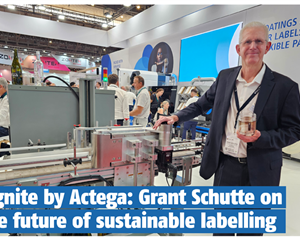
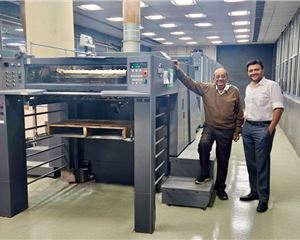
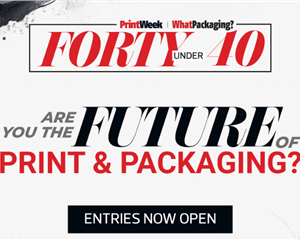
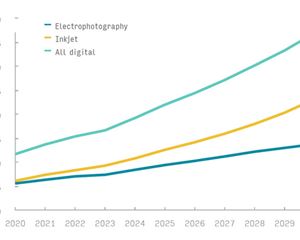
 See All
See All